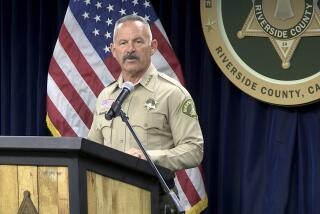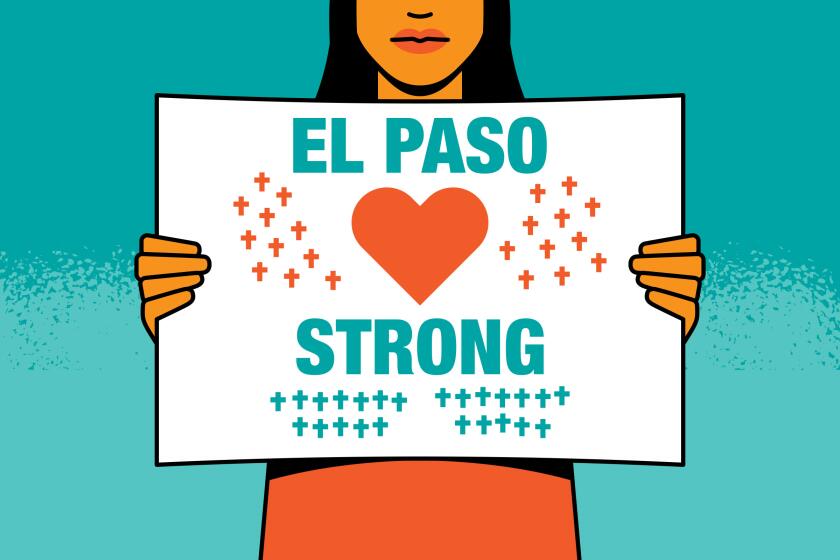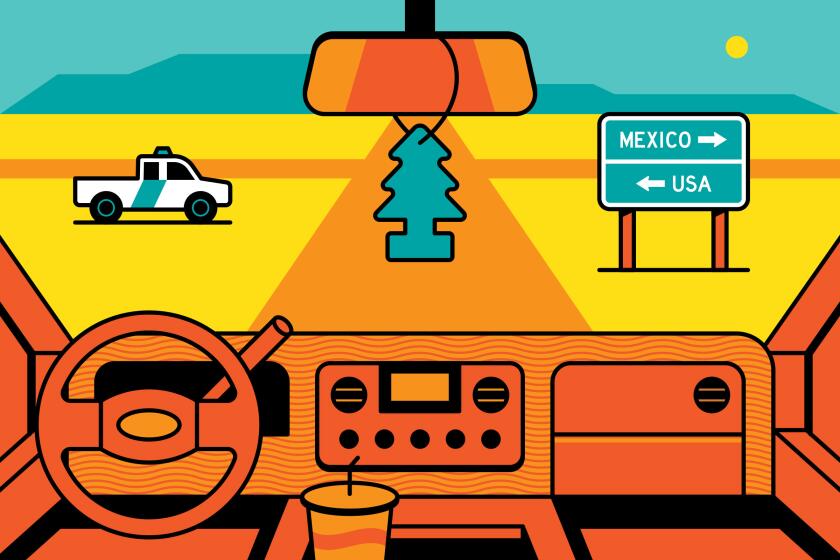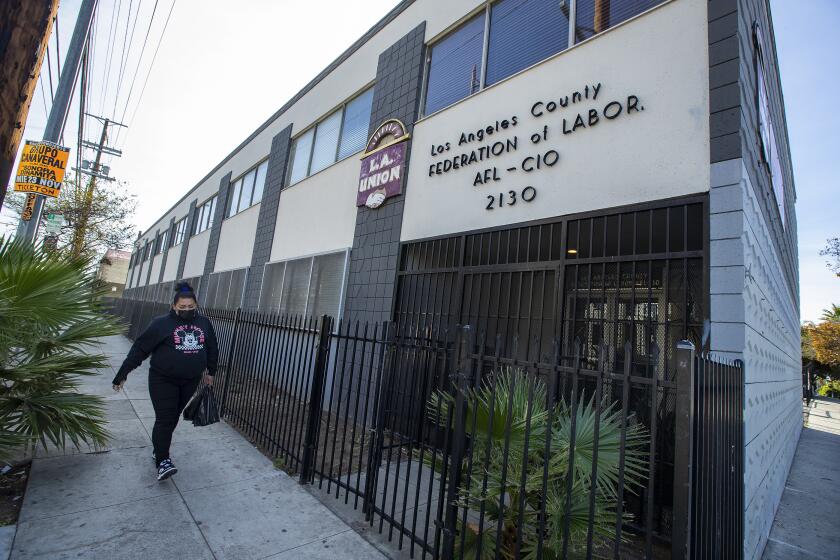Barrier Divides Meeting on Migrant Safety : Fatalities: Opinion is split on whether a 10-foot high freeway-median barrier would reduce the carnage of aliens.
Immigrant advocates and enforcement officials seeking ways to reduce accidents involving undocumented pedestrians on San Diego-area freeways clashed Thursday over a proposal to erect 10-foot-high barriers along parts of Interstate 5.
While representatives of the U.S. Border Patrol and the California Highway Patrol strongly endorsed the barrier concept, immigrant representatives from San Diego and Orange County voiced fears that such a step could result in more injuries by trapping exhausted and frightened immigrants in the median strips of hazardous expressways.
“I don’t think it’s going to save one life,” Lee Steelman, a member of the Human Resources Committee of the city of San Clemente, said during an informational meeting in Oceanside sponsored by Assemblyman Steve Peace (D-Chula Vista.) “I just see panic.”
Meantime, the California Department of Transportation, which is contemplating the construction of freeway barriers, disclosed that it had decided to halve the number of traffic lanes from 8 to 4 on the approximately 3-mile strip of I-5 near the U.S.-Mexico border where most of the accidents occur.
The hope, Caltrans officials said, is that fewer lanes and consequently slower-moving traffic will reduce the frequency of pedestrian injuries in the targeted area, along I-5 between the international boundary and the off-ramps leading to California Highway 905.
Studies have shown that the reduction in lanes--the northbound and southbound roadways each would be cut from 4 to 2 lanes--should not significantly hamper the flow of traffic, said Stuart Harvey, deputy district director for the Caltrans district office in San Diego. The move is “not irreversible,” Harvey added, explaining that the other lanes could be restored if traffic tie-ups did develop. The change is planned for sometime early next year, Harvey said.
“We’re breaking new ground here . . . in dealing with an extraordinarily unusual problem,” Harvey said.
Thursday’s meeting was the latest in a series of sessions designed to devise solutions to the bloody problem, which has seen San Diego-area freeways emerge in recent years as death traps for scores of undocumented immigrants en route north from the border. Since January 1987, according to the California Highway Patrol, 101 immigrant pedestrians have been killed and an additional 110 injured after being struck by vehicles on area expressways. The problem is unique to San Diego, one of the world’s busiest migratory corridors.
Two major trouble spots have emerged: The 3-mile strip of I-5 just north of the border, and, 70 miles to the north, an 8-mile section of I-5 in Camp Pendleton. The border-area freeway presents a barrier to undocumented immigrants who have just crossed from Tijuana, and the more northern section is regularly crossed on foot by immigrants attempting to evade detection at the Border Patrol checkpoint at San Onofre.
In recent years, authorities attempting to reduce the carnage have taken a number of steps, including increasing freeway lighting; thinning roadside brush that provides cover for border-jumpers; posting warning signs advising motorists of the danger; and the airing of public service spots on television and radio publicizing the threat. The number of deaths has mounted anyway.
This year, the Border Patrol has attempted to devise strategies to keep migrants off the freeways, and the California Highway Patrol has increased officer presence near the checkpoint in an effort to reduce motorists’ speed.
Authorities have voiced the hope that the cumulative strategies are having some impact. No immigrant pedestrians have been killed on the freeways in two months, officials say, although several have been injured.
Gustavo De la Vina, chief Border Patrol agent, said agents are now spotting about 100 people along the median of I-5 in the border area on a typical Saturday, down from almost 500 a month ago. He credited patrols deployed to force immigrants away from roadways.
Next year, Caltrans plans to erect changeable message signs along I-5 in the border area. The signs will be used to warn motorists that pedestrians might be on the road.
Meantime, other strategies are under consideration, including the controversial proposal to build 10-feet-high metal barriers in the freeway medians in the two principal danger zones. Caltrans says it will make a decision on whether to proceed with construction of the barriers sometime early next year, possibly after holding public hearings on the issue.
Supporters say such unscalable barriers would discourage immigrants from embarking on the hazardous dash across the expressways.
“There’s no question that something like this would help,” said Capt. Ron Phulps of the California Highway Patrol, in comments echoed by De la Vina of the Border Patrol.
But immigrant advocates say immigrants would probably just walk around the barriers--or, worse, become trapped and panicked in the median areas.
More to Read
Sign up for Essential California
The most important California stories and recommendations in your inbox every morning.
You may occasionally receive promotional content from the Los Angeles Times.










